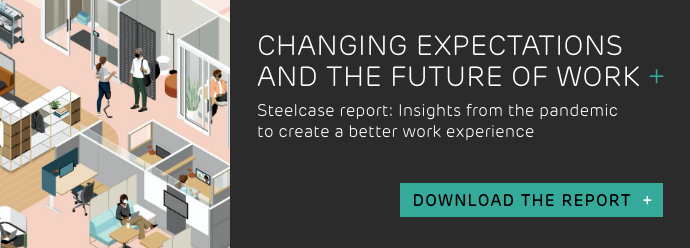The pandemic has had a huge impact on what people need and expect in the workplace. Being at home has made them realise what they need to feel good and be productive.
One thing people have become more deeply aware of is their need for comfort. And they will expect organisations to address this in the workplace.
A holistic view of comfort
“During stay-at-home orders many people had to improvise and work from sofas, kitchen tables and even beds. Pain, distractions and stress have caused people to yearn for a broad interpretation of comfort, especially after such a disruptive time.” Steelcase
People have become more aware not just of their need for physical comfort, but also of their need for cognitive and emotional comfort.
- Physical comfort - The lack of a comfortable workspace was a big issue hindering workers ability get work done at home. Musculoskeletal complaints skyrocketed during lockdown as people worked hunched over laptops from the dining table. Getting back to the office will mean access to ergonomic chairs and the ability to work in a range of postures throughout the day.
- Cognitive comfort - Noise, visual distractions and even the pull of household chores have been a challenge for many while working from home. People have missed the distraction-free environment that the office provides.
- Emotional comfort - After months of feeling disconnected and isolated from colleagues, one of the most important things employees will be looking for is the ability to socialise and gain a stronger sense of belonging and purpose within the organisation.
The workplace will need to be designed and furnished in such a way to support people in each of these three areas.
Physical comfort
People have had very different setups while working from home. Those with a comfortable set up, perhaps those with home offices equipped with ergonomic chairs and a spacious workstation, will be looking for the same level of comfort back in the office.
Others who have developed aches and pains after months spent working in less than ideal settings will be craving a space that is designed to support their comfort.
So, what does the workplace need to offer to support employees’ physical comfort?
Choice of workspace – The office should provide different workspaces to suit workers’ individual preferences. For example, some may prefer to work at a standing desk while others may prefer a soft, reclining chair. The variety of spaces on offer not only means they can move around to support different tasks, but also encourages movement throughout the day.
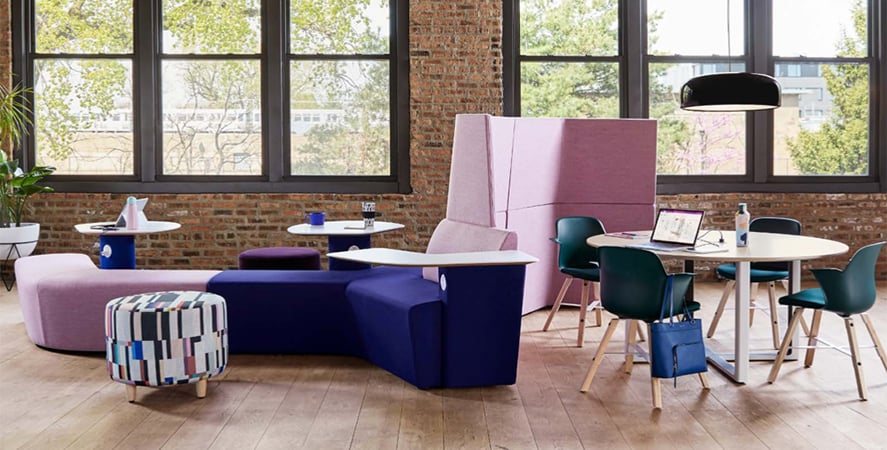
Ergonomic chairs – A good, ergonomic chair can prevent back strain, fatigue and discomfort, improving workers’ ability to concentrate, and their quality of focus and working experience. They can help people work in the way that is most comfortable to them.
Steelcase research found that people working from home in an ergonomic chair were more likely to report they have a comfortable workspace
Use of materials and upholstery - Mesh fabric is often used in office chairs because the springy nature means it responds to the body’s shape. But there are new materials being developed all the time that focus on improving user comfort and wellbeing. For example, upholstery made from celliant fibers improves blood flow and circulation, which boosts energy and comfort.
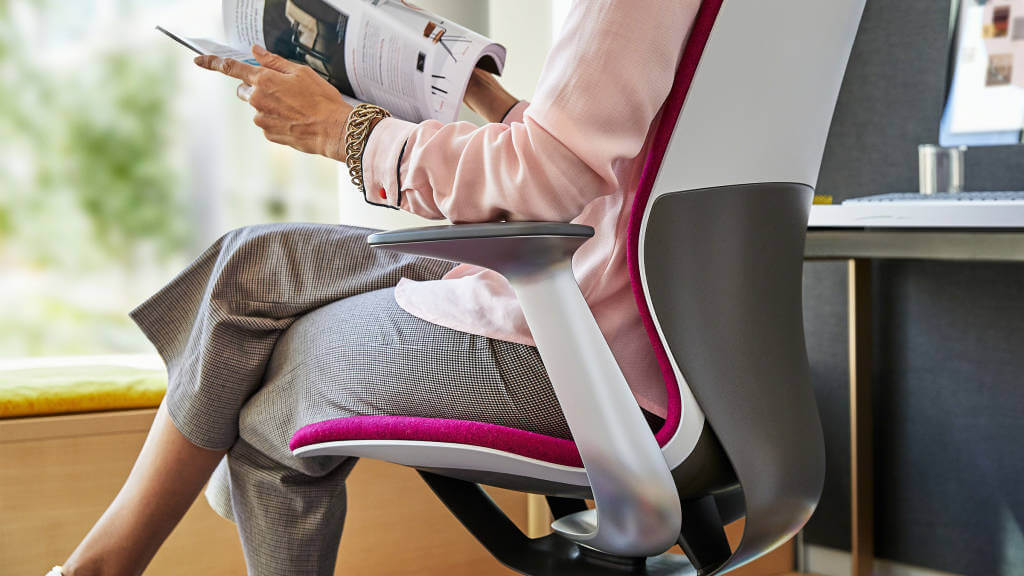
Cognitive comfort
The workplace needs to be a space that allows people to think clearly and creatively, and to do their best work. In order to support this, the workplace needs to provide:
Space to focus – Pods, booths or larger no-tech zones can provide a distraction-free environment for deep, focused work. These spaces should be fitted with furniture that supports different postures.
Biophilic elements - The use of biophilia such as living walls, natural materials and warm lights help to boost cognitive wellbeing and creative thinking. For example, Brunner's PARA VERT plant life wall (shown below) separates one space into two working zones.
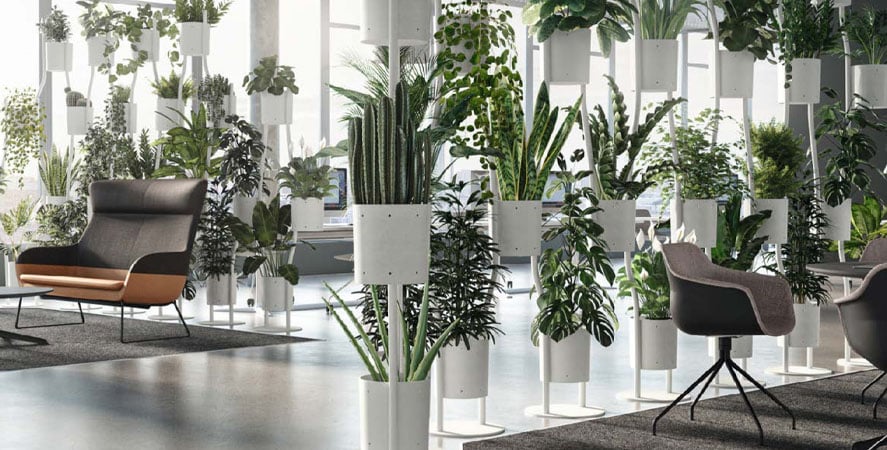
Hackable spaces - The ability to reconfigure furniture, such as desks, technology or other boundaries can help give people the visual and territorial privacy they need to focus. Similarly, height-adjustable desks can support varying postures, literally giving the user a fresh perspective on a piece of work they have been focusing on.
Space to recharge - Working on high-concentration tasks can be mentally exhausting. Contemplative spaces and relaxation zones provide a calm, distraction free-zone, allowing the brain to reset and batteries to recharge so workers can go back to their tasks with a renewed focus. These spaces should be furnished with soft chairs and day beds to aid relaxation. Quiet booths, pods, meditation zones and outdoor areas can also provide spaces for people to cognitively refresh.
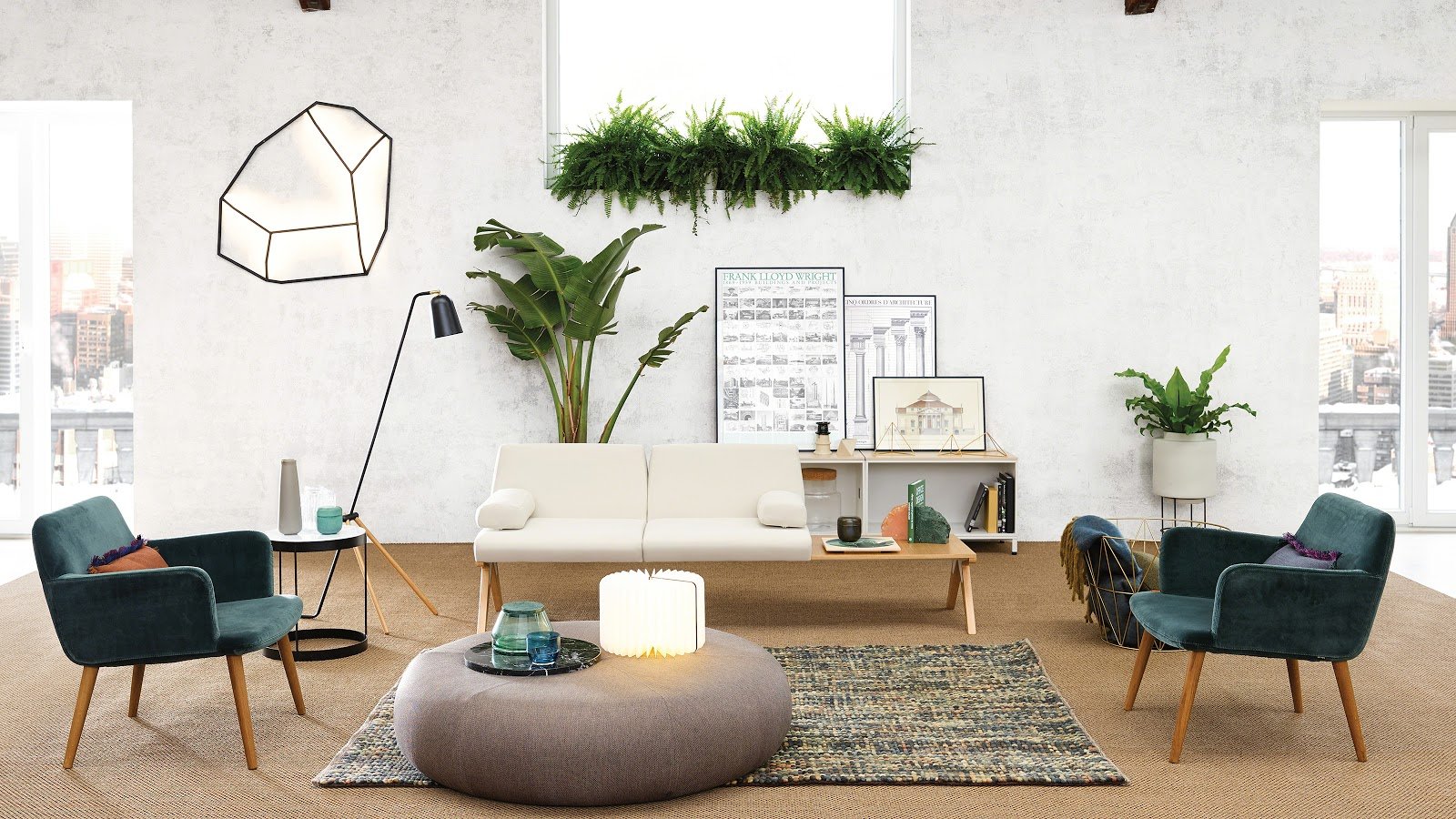
Emotional comfort
The pandemic has served as a powerful reminder of the office’s role as a place for people to feel connected to both their colleagues and the organisation. The office needs to work harder to help people feel connected to each other and to reinforce a sense of belonging and purpose.
This means providing employees with:
Open spaces - Maintaining open spaces within the office will be key for providing workers with the social connection and sense of belonging they have been missing. Repositioning furniture will provide individual settings within open spaces to serve people stimulated by being around others, and moveable screens will let people adapt boundaries and create privacy as needed.
71% of UK workers still want to work in open environments, according to Gensler’s UK Workplace Survey 2020
%20(1).jpg?width=691&name=19-0116924%20(1)%20(1).jpg)
Social spaces – People coming into the office will want to catch up with colleagues in a more relaxed environment, especially in the short term after months apart. While Covid restrictions continue small tables will allow for social distancing, but can easily move together in the future. Outdoor spaces can also be leveraged for socialisation.
Flexibility – With the pandemic in mind, people will want to be able to control their proximity to other people. Fluid rather than fixed furniture solutions will allow people to position themselves into a space they feel safe.
After months away from the office, workers have never been more certain of what they value about the workplace. The organisations that put employee’s physical, cognitive and emotional comfort at the heart of their workplace design will be more likely to succeed in attracting and retaining the best talent.




